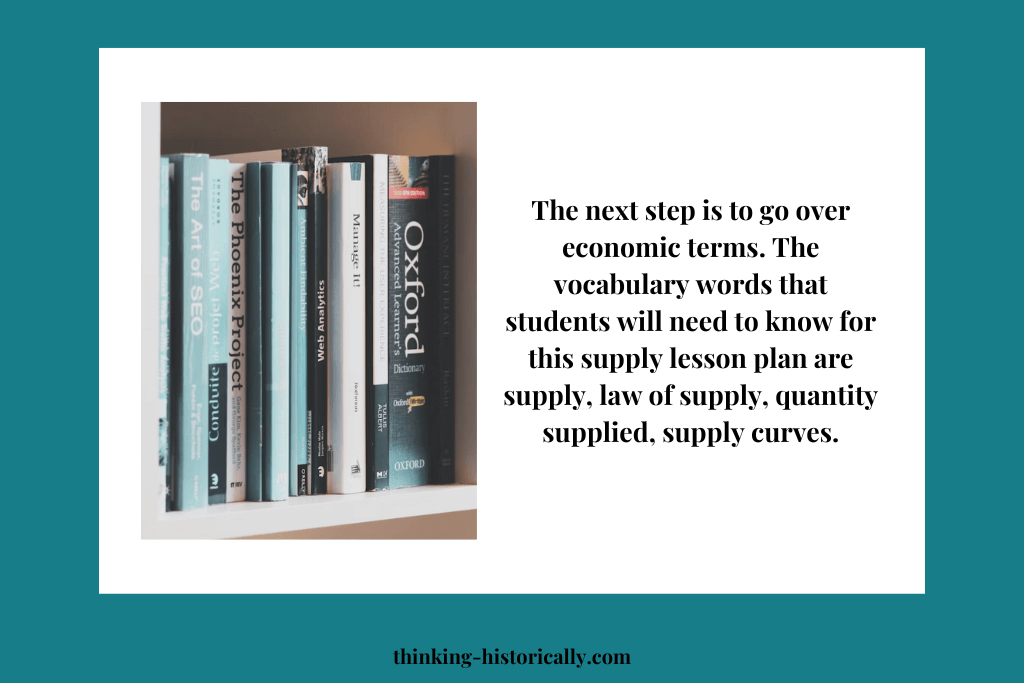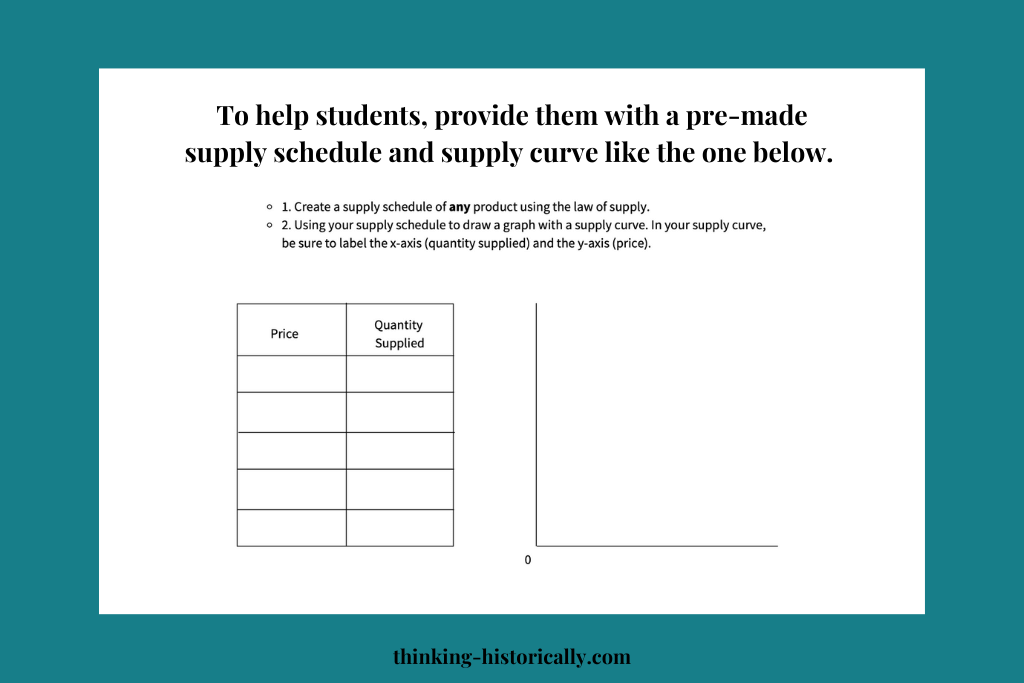If you’re a secondary economics teacher, you might have already taught your students about the concept of demand. The natural next concept to teach would be supply. But you might be wondering how to teach supply. Economics can be a dry subject to teach but the thing about economics is that the concepts are easy for students to understand when concepts are broken down and students are given examples.
Don’t worry! I’ve got you covered. I’ll walk you through my introduction to supply lesson plan that you can reproduce in your own classroom. If you’re interested, you can also purchase the complete lesson plan here.
Supply Lesson Plan Warm-up

Since students can be easily turned off by economics, it is important to hook them in from the very beginning of the lesson. For this supply lesson plan, I used two warm-up scenarios to grab their attention.
The two warm-up scenarios that I display on the board are:
- Scenario 1: Pretend you own a convenience store, you have to decide which frozen pizza to stock in the refrigerator. Each time somebody buys Pizza A, you make $2 in profit. Each time somebody buys Pizza B, you make $2.25 in profit. Which pizza will you choose? Why?
- Scenario 2: You’re a farmer, and you grow carrots and onions. For a long time, you made an equal amount of profit selling both vegetables at the local farmers’ market. Unfortunately, the price of onions falls in half. How will this affect the number of onions you’ll decide to grow? How will this affect the number of carrots you’ll grow?
The purpose of these scenario questions is to get students to start thinking from the perspectives of suppliers or producers. After students have had some time to complete the warm-up and share the responses with their peers, tell them that today they will learn about supply.
Economic Terms

The next step is to go over economic terms. The vocabulary words that students will need to know for this supply lesson plan are supply, law of supply, quantity supplied, supply curve, and supply schedule.
Below, I’ll list the definitions I use for each vocabulary term.
- Supply: Supply is the goods and/or services that producers offer at different prices.
- Law of Supply: The law of supply says that at higher prices, producers offer more goods/services and at lower prices offer less goods/services.
- Supply Curve: A supply curve is a graph that shows goods/services that producers offer at various prices.
- Supply Schedule: A supply schedule is a chart that shows goods/services that producers offer at various prices.
- Quantity Supplied: Quantity supplied is the amount that producers of a certain product offer their goods and services at a specific price.
To teach students these concepts, display them on the board and provide students with examples of each term. In pairs or individually, have students write their own definitions of each term.
Scenarios
Next, have students apply their understanding of these terms with the following scenarios (feel free to create more scenarios!):
- According to the law of supply, how will the supply of cookies change if consumers are willing to pay double the price of the cookies?
- According to the law of supply, how will the supply of gasoline change if the price of gasoline decreases?
- If the price of soda increases, how will that affect the number of sodas supplied?
Again, you may have students work either individually or in pairs. To open up these scenarios into a class discussion, you can call on students to share their responses.
Supply Lesson Plan Exit Slip
Finally, as their exit slip have students complete the following tasks:
- Create a supply schedule of any product using the law of supply
- Use your supply schedule to draw a graph with a supply curve. In your supply curve, be sure to label the x-axis as quantity supplied and the y-axis as price.
To help students, provide them with a pre-made supply schedule and supply curve like the one below.

This is a great lesson to introduce students to supply. If you want to purchase the complete lesson, click here. The complete lesson includes lesson plan procedures, student handouts, and a student friendly reading.
Happy teaching!


